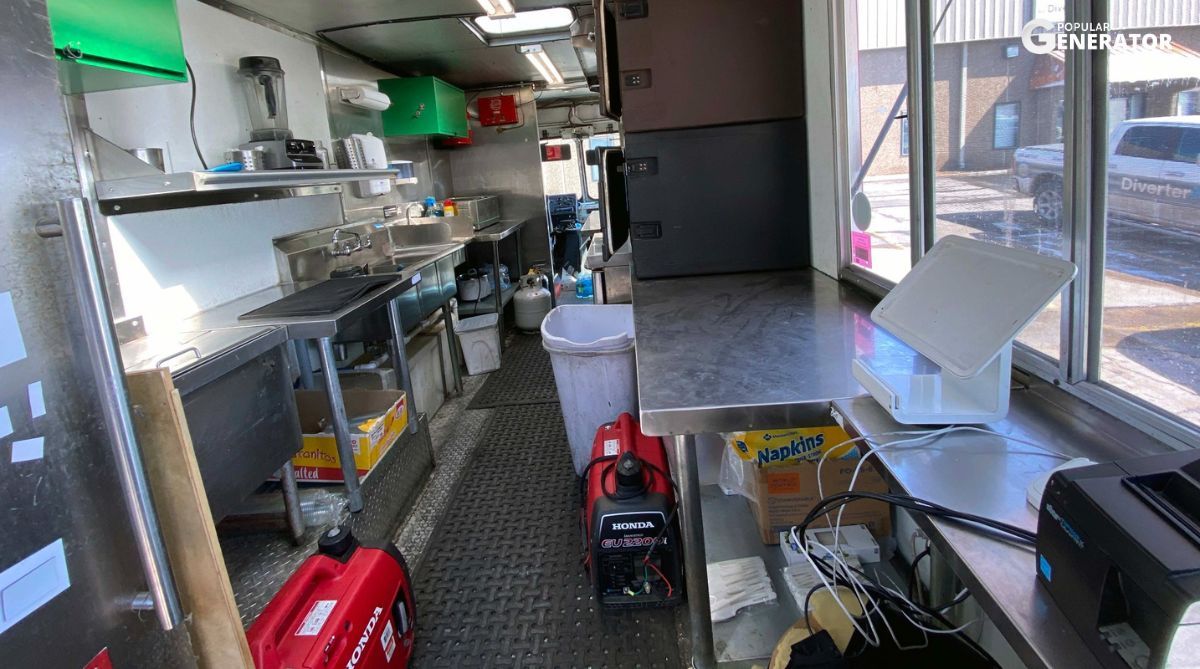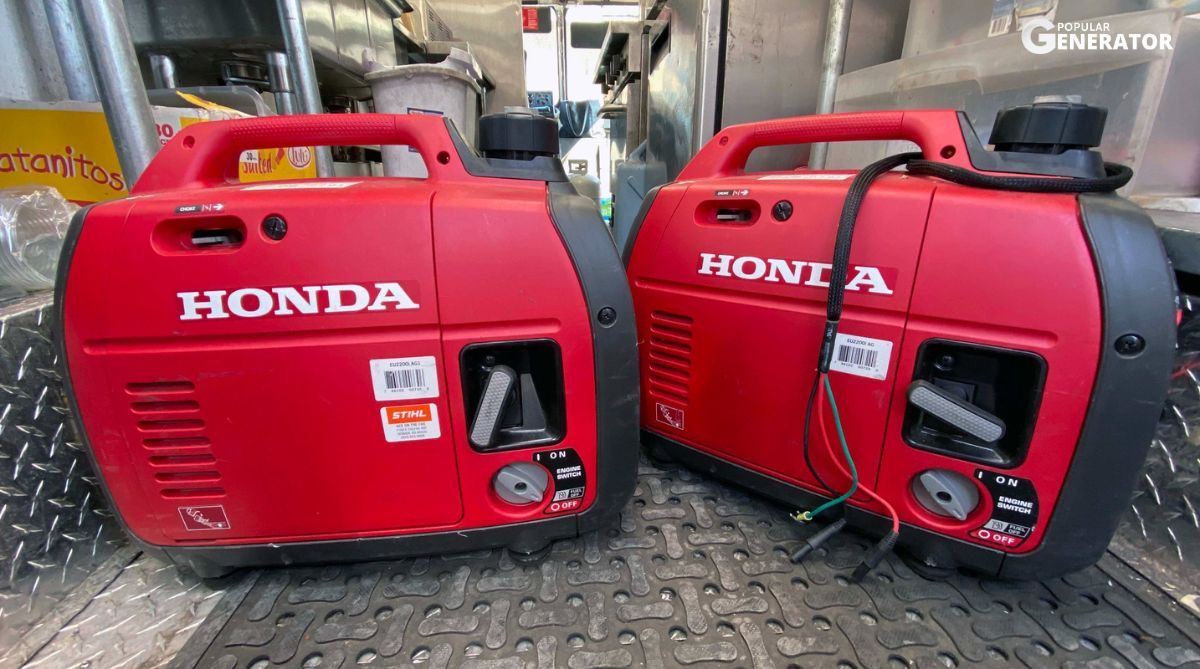What Your Food Truck Actually Needs to Power (Product Table ↑)
Running a food truck means keeping way more than just your fryer and grill going. Here's what's really sucking power from your generator every single day.

Your refrigeration never stops running. That big walk-in cooler in back? It's pulling power 24/7 to keep your ingredients fresh. Same goes for any reach-in fridges and freezers. The freezer is especially power hungry when it kicks on, demanding a huge surge of electricity for a few seconds before settling down. Without these running constantly, you're looking at spoiled food and health code violations.
Cooking equipment hits hardest during rush times. When lunch hits and you fire up everything at once, that's when your generator really gets tested. Deep fryers are electricity hogs, especially when heating up fresh oil. Even your gas grill needs power for the ignition and exhaust fan. Don't forget about prep equipment like steamers or warming trays that stay on all day.
Ventilation keeps you legal and comfortable. Those exhaust fans above your cooking area must run whenever you're serving food. Health inspectors will shut you down without proper ventilation. Add in any air conditioning or heating for your service area, and you're talking serious power draw that never stops.
Everything hits at once during busy periods. Picture your lunch rush: fryer bubbling, grill sizzling, refrigeration running, exhaust fans going, lights blazing, and customers paying with cards. That's when every piece of equipment in your truck demands power simultaneously. This is the moment that separates reliable generators from the ones that leave you dead in the water.
↪ The reality is bigger than most people expect. When I add up everything running during peak service, most food trucks need between 7,000 to 9,000 watts of steady power. That's not counting the extra surge when equipment
Buying Guide For Food Truck Owner (Product Table ↑)
Finding the right generator can make or break your food truck business, and I don’t say that lightly. I’ve seen trucks stall in the middle of a lunch rush because their generator couldn’t keep up with the load, and it’s a nightmare no owner wants to deal with. When your entire kitchen is packed into a few square feet, the generator becomes the lifeline that keeps everything running smoothly. That means the decision isn’t just about buying a piece of equipment, it’s about protecting your ability to serve customers and keep the cash flowing.
The first thing you need to think about is power capacity. Most food trucks rely on multiple high-demand appliances like refrigerators, freezers, fryers, and griddles. If your unit can’t deliver enough wattage, you’ll be stuck turning off one appliance to use another, which slows down service and frustrates customers. In my experience, a generator in the 5,000 to 10,000 watt range usually hits the sweet spot for most trucks, though you’ll want to do a quick audit of your appliances to know exactly how much power you need.
Runtime is the next big factor. Food trucks rarely shut down after just a couple of hours. If you’re working a festival or a long event, you could be running that generator for 10 to 12 hours straight. I’ve tested units that sputtered after five hours and it’s a disaster having to refuel during peak service. Look for a machine with a fuel tank large enough to handle a full shift, or better yet, one that offers solid fuel efficiency so you’re not spending half your profit on gasoline.

Noise level is something a lot of first-time buyers underestimate. You might not think about it while you’re behind the counter, but your customers absolutely notice. I once parked next to a truck with a loud, rattling generator and people avoided their seating area because of the constant drone. Quiet operation makes your truck more inviting and keeps you in good standing at events where noise restrictions are enforced.
Portability and durability are also worth paying attention to. A food truck generator isn’t going to live a cushy life in a climate-controlled garage. It’s going to get hauled, bumped, and sometimes stored in less-than-ideal conditions. Wheels and handles make life easier, but you’ll also want a tough frame that can handle daily use.
One common mistake I see food truck owners make is buying a generator that’s barely big enough for their current setup. Then they add a second freezer or another fryer and suddenly they’re maxing out the unit, which shortens its life and puts them back at square one. Another misstep is ignoring voltage stability. Sensitive gear like refrigerators and POS systems don’t like dirty power, and cutting corners here can cost you in repairs. A generator is one of those tools where buying for the long term pays off every single day you fire up the truck.
Final Thought (Product Table ↑)
At the end of the day, the best generators for food truck owners are the ones that keep your kitchen humming without adding stress to your workday. You need steady power for every fryer, fridge, and freezer you rely on, and you want it delivered in a way that won’t eat into your profits with wasted fuel or drive customers away with excessive noise. From what I’ve seen, choosing the right generator is less about chasing specs on paper and more about finding a machine that matches the way you actually run your truck.
If you’re running a smaller setup and need something quiet and efficient, the Honda 2200 Watt 120 Volt Portable Generator is a workhorse that delivers clean, reliable power. For those who want maximum flexibility with longer shifts and different fuel options, the Westinghouse 12500 Peak Watt Tri-Fuel Portable Generator gives you the freedom to switch between gas, propane, and natural gas. And if you’re running a large food truck with heavy appliances, the DuroMax XP13000EH 13,000-Watt Dual Fuel Portable Generator provides the muscle to keep everything running without breaking a sweat.
Pick the generator that fits your needs today but also has room to grow with your business. With the right choice, you can serve confidently knowing your power supply is as reliable as the food you’re putting out.
FAQs About the Best Generators for Food Trucks (Product Table ↑)
1. How many watts does a food truck generator need?
Most food trucks run comfortably with a generator in the 5,000 to 10,000 watt range. The exact number depends on your appliances. A truck with one fridge, a freezer, and light cooking equipment may only need around 5,000 watts, while a full kitchen with fryers, griddles, and multiple coolers could push closer to 10,000. Always add up the wattage of all your appliances and leave extra headroom so you’re not running the unit at full load all day.
2. Which fuel type is best for a food truck generator?
Gasoline generators are common and easy to refuel, but propane and dual-fuel models are often more cost-effective and cleaner burning. If you want the flexibility to run long shifts without hunting for gas, a tri-fuel generator that can switch between gasoline, propane, and natural gas gives you the most options.
3. How long should a food truck generator run on a full tank?
Ideally, you want a generator that can handle 8 to 12 hours of continuous runtime. That way you can make it through a full day at a festival or busy corner without stopping to refuel during peak business hours.
4. Are inverter generators good for food trucks?
Inverter generators are great for clean, stable power and quiet operation, but most of them are too small for the demands of a full food truck kitchen. They can work if you only need to run light appliances or a coffee truck, but for heavy cooking equipment, you’ll need a larger conventional or dual-fuel generator.
5. What’s the quietest generator option for a food truck?
Noise is a big deal for customer comfort. Honda’s inverter units, like the Honda 2200, are known for being whisper quiet, but they don’t have enough power for a full setup. For bigger trucks, look for larger models with built-in mufflers and low decibel ratings, ideally under 75 dB at full load.
6. How do I make sure my generator is safe for sensitive equipment like POS systems?
Choose a generator with stable voltage and low harmonic distortion. Many higher-end models advertise “clean power” under 5 percent THD, which is safe for electronics. Avoid running your generator at maximum capacity, as that’s when voltage spikes and dips are most likely to happen.















